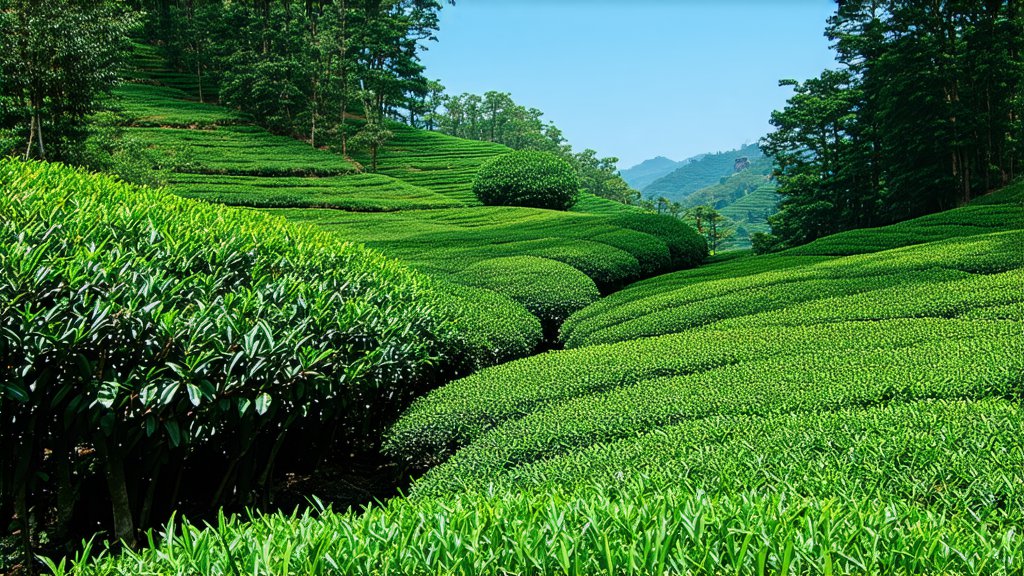
The world of tea is vast and varied, with each variety offering its own unique flavors, aromas, and cultural heritage. Among these, Tieguanyin stands out as one of the most revered and celebrated teas within the Chinese tea culture. This article aims to take you on an exploratory journey through the history, varieties, production process, and tasting methods of this exquisite oolong tea from Anxi County, Fujian Province.
Historical Background
Tieguanyin, often referred to as the "Iron Goddess of Mercy" or "Iron Buddha," has a rich historical background that dates back over 300 years. Its name is derived from the local Guanyin Temple where, according to legend, it was first discovered by a poor scholar who was miraculously saved by a beautiful woman believed to be the goddess Guanyin. In gratitude, he vowed to devote his life to the cultivation and promotion of this extraordinary tea.
The tea gained widespread popularity during the Qing Dynasty, particularly after Emperor Qianlong's endorsement. It became a favorite among the imperial court and soon spread across China and beyond, establishing itself as a symbol of high-quality Chinese tea.
Varieties of Tieguanyin
Tieguanyin encompasses a variety of sub-types, each with its own distinct characteristics. The two primary categories are Anxi Tieguanyin and Taiwanese Tieguanyin. While both share a common origin, they have evolved differently due to regional variations in climate, soil, and cultivation practices.
-
Anxi Tieguanyin: Grown in the mountainous regions of Anxi County, this variety is renowned for its floral fragrance and smooth taste. The leaves are typically rolled into tight pellets, which unfurl beautifully when brewed.
-
Taiwanese Tieguanyin: Introduced to Taiwan in the early 20th century, this variant has adapted to the island's unique growing conditions. It tends to have a more pronounced roasted flavor and a slightly different rolling style compared to its Anxi counterpart.
Production Process
The production of Tieguanyin is an intricate process that involves several stages:
-
Plucking: Only the tenderest buds and leaves are selected for harvesting, usually done by hand to ensure quality.
-
Withering: The fresh leaves are spread out in thin layers to wilt under natural sunlight or controlled environments. This helps reduce moisture content and initiates enzymatic activity.
-
Fixation (Pan-frying): The withered leaves are then quickly fried in large woks to halt oxidation. This step is crucial in preserving the greenish color and fresh aroma of the tea.
-
Rolling: After fixation, the leaves are rolled either manually or mechanically to form their characteristic shape. This process helps release more essential oils and enhances the tea's flavor profile.
-
Oxidation: The rolled leaves are allowed to undergo partial oxidation, a delicate balance between green and black tea processing. This stage determines much of the tea's final taste and aroma.
-
Roasting: Finally, the leaves are roasted to remove any remaining moisture and further develop their complex flavors. The degree of roasting can vary, influencing the tea's final characteristics.
Tasting Methods
To fully appreciate the nuanced flavors of Tieguanyin, proper brewing and tasting techniques are essential:
-
Brewing Temperature: Use water heated to around 90-95°C (194-203°F). Boiling water can scald the delicate leaves.
-
Tea-to-Water Ratio: A typical ratio is about 3 grams of tea per 150 ml of water. Adjust based on personal preference for stronger or lighter brews.
-
Steeping Time: For the first infusion, steep for approximately 30 seconds. Subsequent infusions can be extended gradually, as the leaves open up and release more flavors.
-
Number of Infusions: High-quality Tieguanyin can be steeped multiple times, often up to 7-8 infusions, each revealing different aspects of its flavor profile.
-
Tasting Notes: Pay attention to the tea's aroma, which should be floral, fruity, or creamy. The liquor should be smooth and well-balanced with a slight sweetness and a clean aftertaste.
Cultural Significance
Tieguanyin is more than just a beverage; it embodies centuries of Chinese tea culture and tradition. It plays a central role in various ceremonies, including weddings, festivals, and diplomatic gifting. The act of preparing and serving Tieguanyin is considered an art form, reflecting the host's hospitality and respect for guests.
In conclusion, Tieguanyin represents the pinnacle of Chinese tea craftsmanship, blending history, tradition, and exceptional quality. Whether you are a seasoned tea connoisseur or a curious newcomer, exploring this remarkable oolong tea promises a rewarding experience that transcends mere consumption—it’s a journey into the heart of Chinese culture and heritage.